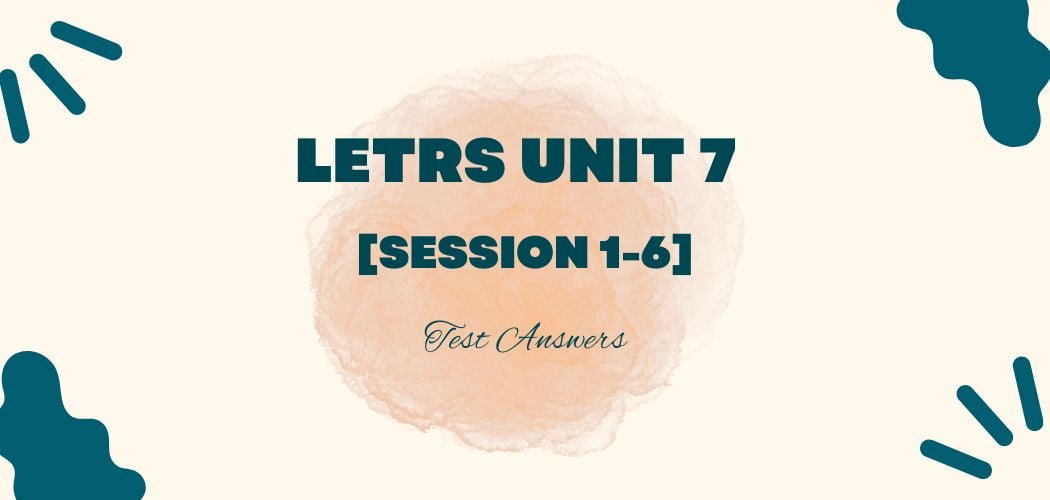Overview: “Explosive Ordnance Reconnaissance” could refer to surveying activities specifically aimed at identifying and assessing explosive ordnance or potential explosive threats in a given area. This would involve searching for and locating explosive devices or unexploded ordnance and gathering information about their type, condition, and potential danger.
It’s worth noting that while the term “Explosive Ordnance Reconnaissance” is not widely recognized or used, the concept of conducting reconnaissance activities to identify explosive hazards is an integral part of broader explosive ordnance disposal (EOD) operations.
Explosive Ordinance Reconnaissance test answers
Question 1. Identify the false statement about CBUs.
Answer: Dispensers themselves do not contain explosive or spring-pressure hazards
Question 2. Which of these characteristics of a missile differs from a rocket?
Answer: Missiles have a guidance system
Question 3. Which statement BEST describes the ordnance shown?
Answer: Both have sensitive fuses that could detonate if jarred in any way.
Question 4. Identify the false statement about land mines.
Answer: Land mines have self-destruct timers and very sensitive movement sensor systems
Question 5. The key safety message to remember when encountering potential explosive hazards is?
Answer: “If you didn’t drop it, don’t pick it up”
Question 6. What is the major hazard associated with conventional explosives?
Answer: Fragmentation
Question 7. Select the TRUE statement about Fuses.
Answer: Do not use radios or cell phones within 25 feet of fuses
Question 8. Identify the FALSE statement about UXO hazards.
Answer: A fuse is only dangerous when it is attached to or located near munitions
Question 9. How is this land mine type detonated?
Answer: Command-detonated
Question 10. What explosive threat description of a Booby trap is correct?
Answer: A new enemy bayonet and scabbard lying on the ground
Question 11. Identify the correct procedure for confirming UXO.
Answer: While others are constructing the recommended barricade, make your report. To report via handheld radio be at least 25 feet from the UXO, use a vehicle radio stay 100 feet away from the UXO
Question 12: During EOR actions, you discover a UXO approximately three inches in Diameter within 50 feet of a sandbagged hospital tent. The patients cannot be evacuated. Based on what you have learned, which is the best course of action?
Answer: Ensure hospital sandbags are sufficient according to AFTTP 3-4 and barricade the UXO. Isolate the UXO by shifting patients to the far side of the hospital.
Question 13. Identify the one protective measure that should not be taken when there is an explosive threat.
Answer: Ventilate
Question 14. Markers should be placed around the perimeter of a minefield at intervals of:
Answer: 50 feet
Question 15. Select the false statement about 5/25 check procedures
Answer: Once they are completed you can remove the UXO
Question 16. What is one indication that a UXO is a chemical bomb?
Answer: It may have a strong odor
Question 17. Which is NOT a characteristic of a bomb?
Answer: They have a propulsion system
Question 18. Which of these characteristics of a missile differs from a rocket?
Answer: Missiles have a guidance system
Question 19. Which of these is a characteristic of a Combined Effects munition?
Answer: It can defeat armored vehicles and target personnel simultaneously
Question 20. Which of these is not a type of air ordnance?
Answer: Rocket Propelled Grenades
Question 21. Identify one TRUE statement about bombs.
Answer: Bombs use fins or parachutes for stabilization in flight
Question 22. What is the dud rate of a typical Cluster Bomb Unit?
Answer: 5%
Question 23. Cluster bomb units consist of what two parts?
Answer: The dispenser and payload.
Question 24. Which of these is a non-explosive hazard of a sub-munition?
Answer: They can detonate from the slightest movement
Question 25. Which is NOT a characteristic of a bomb?
Answer: They have a propulsion system
Question 26. Identify one true statement about bombs.
Answer: Bombs use fins or parachutes for stabilization
Question 27. What is one indication that a UXO is a chemical bomb?
Answer: It may have a strange odor
Question 28. Which of these is a true statement about unexploded sub-munitions?
Answer: They can detonate from the slightest movement
Question 29. Which of these characteristics of a missile differs from a rocket?
Answer: Missiles have a guidance system
Question 30. Which of these is not a type of air ordnance?
Answer: Rocket-propelled grenades
Question 31. Cluster bombs consist of what two parts?
Answer: The dispenser and the payload.
Question 32. What is a characteristic of a combined effects munition?
Answer: It can defeat armored vehicles and target personnel simultaneously
Question 33. What is the dud rate of a typical cluster bomb unit?
Answer: 5%
Question 34. Which of these is a non-explosive hazard of a sub-munition?
Answer: Spring Pressure Hazard
Question 35. Which of these statements is not a characteristic of a landmine?
Answer: They are remotely detonated
Question 36. Which of these is a true statement about HEAT projectiles?
Answer: The fuses can be activated by any type of movement
Question 37. Which of these is a true statement about incendiary grenades?
Answer: They burn at over 3500 degrees Fahrenheit and are hot enough to melt an engine block
Question 38. Which of these is a true statement about projectiles?
Answer: All types of projectiles can have explosive fillers and fuzing
Question 39. Which of these is a true statement about projectiles?
Answer: Projectiles can be fin or spin-stabilized
Question 40. Which of these is NOT a type of projectile?
Answer: Fuzeless shell
Question 41. Which of these is a shoulder-fired grenade with a propulsion motor?
Answer: Rocket Propelled Grenade
Question 42. How can white phosphorus be extinguished?
Answer: It has to be smothered or burned up
Question 43. Which of these is a true statement about grenades?
Answer: Grenades can contain explosive and chemical fillers
Question 44. Which of these is most likely to be used as a minefield?
Answer: Any type of terrain
Question 45. What causes the greatest damage in an explosion?
Answer: Explosive blast
Question 46. What occurs when the pressure of an explosion expands and tears the casing of the explosive?
Answer: Fragmentation
Question 47. 75 pounds of explosives can propel fragments up to what distance?
Answer: 1 mile
Question 48. Which of these BEST defines any conventional explosive weapon that is capable of a high order of destruction or used in a manner to kill or injure large numbers of people?
Answer: High-yield explosive
Question 49. Which of these items usually contains a not-so-obvious explosive hazard?
Answer: Aircraft ejection seat
Question 50. What inhalation hazard may be present in an abandoned enemy vehicle that has been fired on by armor-piercing projectiles?
Answer: Radiological hazards
Question 51. Identify the MOST correct statement about fuses
Answer: Some fuzes are susceptible to transmissions from radios and cell-phones
Question 52. What substance does a low-order explosive resemble when exposed to air and sunlight?
Answer: Dark brown or black rocks
Question 53. Which of these is NOT a type of fuze?
Answer: Head Fuze
Question 54. Which of these explosive hazards is intentionally hidden from you?
Answer: Booby traps
Question 55. What term is used to describe an incomplete detonation, or complete detonation at a lower than maximum velocity?
Answer: Low-order detonation
Question 56. What are UXOs?
Answer: Military munitions that were supposed to detonate but didn’t.
Question 57. When calling in a UXO, what is the minimum safe distance for radio transmission?
Answer: 25 feet for handheld radios and 100 feet for vehicle radios
Question 58. What is the minimum safe distance to a UXO for exposed personnel?
Answer: 300 meters
Question 59. During which step of the 5 Cs should you fill out a 9-line EH report?
Answer: Confirm
Question 60. Which of these is NOT an indication of a buried UXO?
Answer: Large Fragments
Question 61. A barricade constructed around exposed resources to shelter it from overpressure and fragmentation is a(an):
Answer: Protective barricade
Question 62. What is EOR?
Answer: A process to detect, mark, secure, and report UXOs
Question 63. A barricade constructed around a small or medium UXO to isolate the effects of an explosion is a :
Answer: Suppresive barricade
Question 64. Which of these is a TRUE statement about marking UXOs?
Answer: Always mark the area, not the item
Question 65. Which is part of the CONTROL step when there is a suspected UXO?
Answer: Use barriers, cordon tape, personnel, or any other means necessary
Question 66. When marking the perimeter of a minefield, how far apart should the markers be spaced?
Answer: 15 meters
Question 67. Which is NOT a characteristic of a bomb?
Answer: They have a propulsion system
Question 68. Identify one true statement about bombs.
Answer: Bombs use fins or parachutes for stabilization
Question 69. What is one indication that a UXO is a chemical bomb?
Answer: It may have a strange odor
Question 70. Which of these is a true statement about unexploded sub-munitions?
Answer: They can detonate from the slightest movement
Question 71. Which of these characteristics of a missile differs from a rocket?
Answer: Missiles have a guidance system
Question 72. Which of these is not a type of air ordnance?
Answer: Rocket-propelled grenades
Question 73. Cluster bombs consist of what two parts?
Answer: The dispenser and the payload.
Question 74. What is a characteristic of a combined effects munition?
Answer: It can defeat armored vehicles and target personnel simultaneously
Question 75. What is the dud rate of a typical cluster bomb unit?
Answer: 5%
Question 76. Which of these is a non-explosive hazard of a sub-munition?
Answer: Spring pressure hazard
Question 77. Which of these statements is not a characteristic of a landmine?
Answer: They are remotely detonated
Question 78. Which of these is a true statement about HEAT projectiles?
Answer: The fuses can be activated by any type of movement
Question 79. Which of these is a true statement about incendiary grenades?
Answer: They burn at over 3500 degrees Fahrenheit and are hot enough to melt an engine block
Question 80. Which of these is a true statement about projectiles?
Answer: All types of projectiles can have explosive fillers and fuzing
Question 81. Which of these is a true statement about projectiles?
Answer: Projectiles can be fin or spin-stabilized
Question 82. Which of these is NOT a type of projectile?
Answer: Fuzeless shell
Question 83. Which of these is a shoulder-fired grenade with a propulsion motor?
Answer: Rocket Propelled Grenade
Question 84. How can white phosphorus be extinguished?
Answer: It has to be smothered or burned up
Question 85. Which of these is a true statement about grenades?
Answer: Grenades can contain explosive and chemical fillers
Question 86. Which of these is most likely to be used as a minefield?
Answer: Any type of terrain
Question 87. What causes the greatest damage in an explosion?
Answer: Explosive blast
Question 88. What occurs when the pressure of an explosion expands and tears the casing of the explosive?
Answer: Fragmentation
Question 89. 75 pounds of explosives can propel fragments up to what distance?
Answer: 1 mile
Question 90. Which of these BEST defines any conventional explosive weapon that is capable of a high order of destruction or used in a manner to kill or injure large numbers of people?
Answer: High-yield explosive
Question 91. Which of these items usually contains a not-so-obvious explosive hazard?
Answer: Aircraft ejection seat
Question 92. What inhalation hazard may be present in an abandoned enemy vehicle that has been fired on by armor-piercing projectiles?
Answer: Radiological hazards
Question 93. Identify the MOST correct statement about fuses
Answer: Some fuzes are susceptible to electromagnetic radiation, and transmissions from a cell phone can cause them to detonate
Question 94. What substance does a low-order explosive resemble when exposed to air and sunlight?
Answer: Dark brown or black rocks
Question 95. Which of these is NOT a type of fuze?
Answer: Head Fuze
Question 96. Which of these explosive hazards is intentionally hidden from you?
Answer: Booby traps
Question 97. What term is used to describe an incomplete detonation, or complete detonation at a lower than maximum velocity?
Answer: Low-order detonation
Question 98. What are UXOs?
Answer: Military munitions that were supposed to detonate but didn’t.
Question 99. When calling in a UXO, what is the minimum safe distance for radio transmission?
Answer: 25 feet for handheld radios and 100 feet for vehicle radios
Question 100. What is the minimum safe distance to a UXO for exposed personnel?
Answer: 300 meters
Question 101. During which step of the 5 Cs should you fill out a 9-line EH report?
Answer: Confirm
Question 102. Which of these is NOT an indication of a buried UXO?
Answer: Large fragments
Question 103. A barricade constructed around exposed resources to shelter it from overpressure and fragmentation is a(an):
Answer: Protective barricade
Question 104. What is EOR?
Answer: A process to detect, mark, secure, and report UXOs
Question 105. Which of these is a TRUE statement about marking UXOs?
Answer: Always mark the area, not the item
Question 106. Which is part of the CONTROL step when there is a suspected UXO?
Answer: Use barriers, cordon tape, personnel, or any other means necessary
Question 107. When marking the perimeter of a minefield, how far apart should the markers be spaced?
Answer: 15 meters



